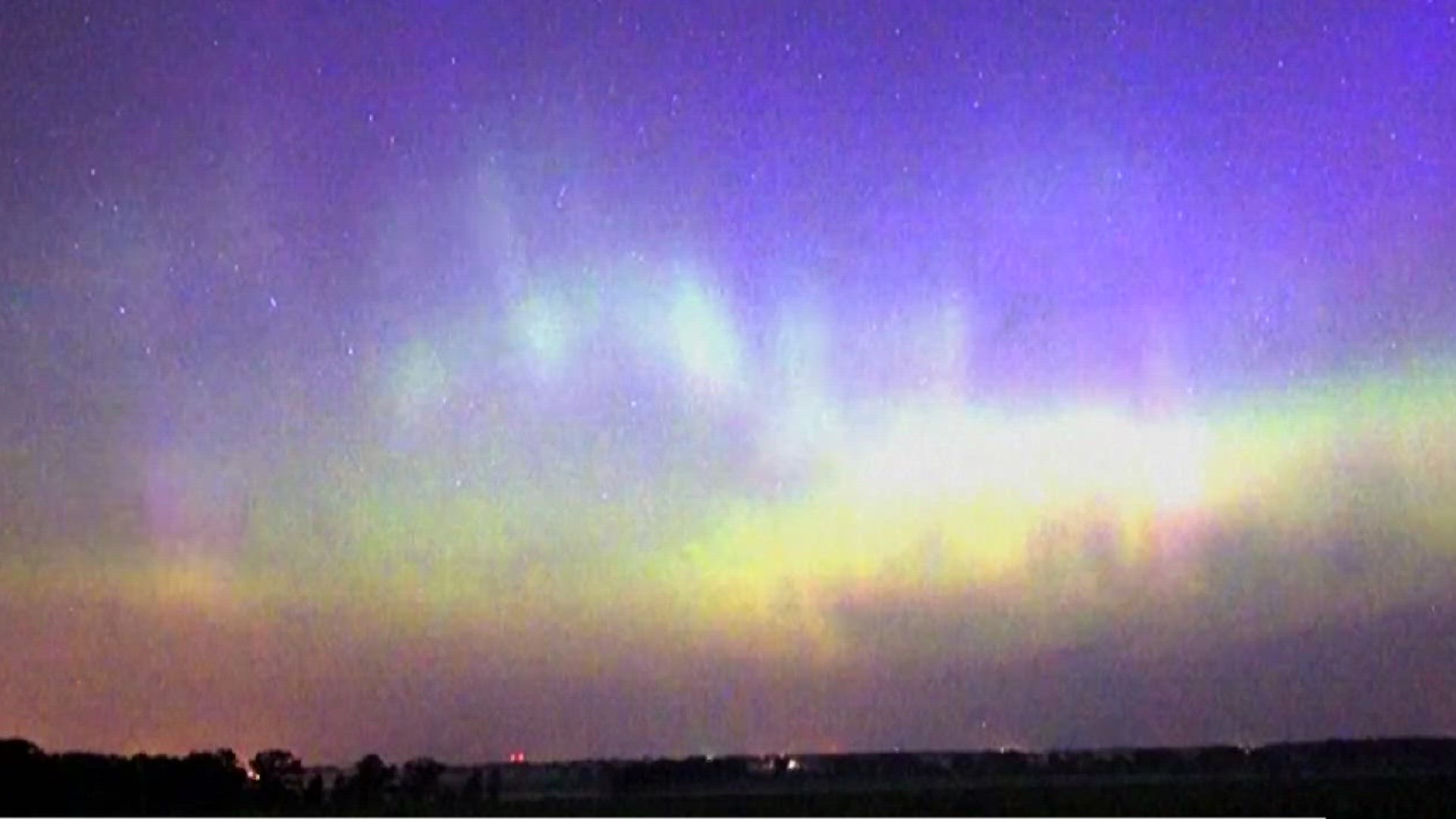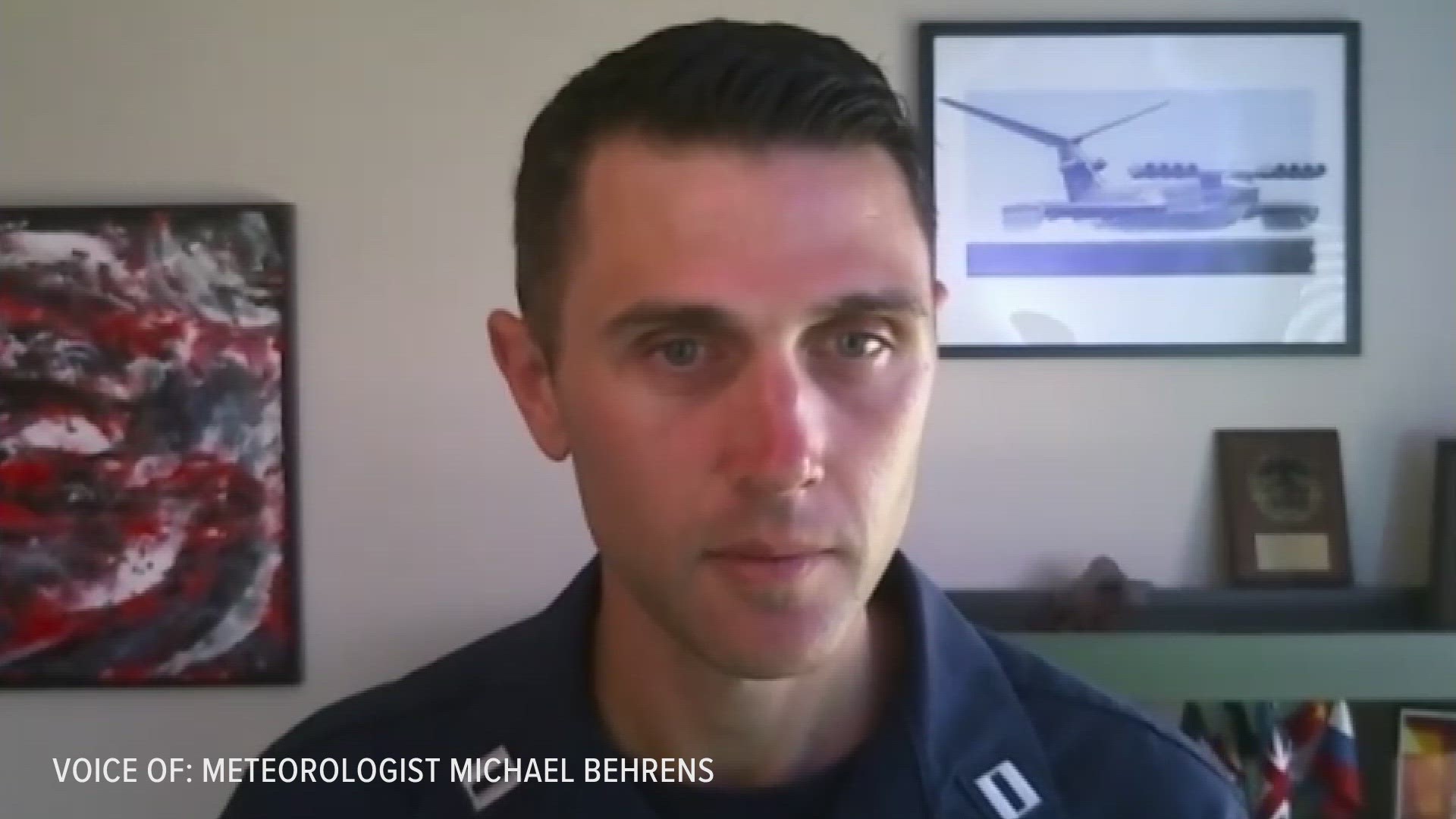GRAND RAPIDS, Mich. — Over the weekend a story about the potential for widespread visibility in the Northern Lights this week took the internet by storm, including in a story from the Associated Press shared here by 13 On Your Side.
However, the reality is this story was far too optimistic about our chances for an aurora, and the actual forecast is really nothing special.
According to the Space Weather Prediction Center, the forecast in the next 48 hours has Kp index levels no greater than 4. Generally speaking, we need levels around a 6 or 7 for the Northern Lights to make it down into West Michigan.


So, what happened and what changed?
To find out, I reached out to the Space Weather Prediction Center and Lt. Bryan Brasher, for an expert's opinion. In basic terms, they think it's possible that a long-term forecast was used or misunderstood to make a short term prediction.
Lt. Brasher told us that for auroras we really don't have a good picture beyond 3 to 4 days, but there is a 27 day forecast that tracks more long term events that could lead to solar activity impacting us here on Earth.
"I would anticipate that a lot of this media hype was either, A, based on an old forecast, or B, a misinterpretation of that forecast. You know, even if we had a KP equals 6 and we were at the G2 level, you wouldn't still expect widespread auroral viewings," he said, when speaking about this weekend.
There are a lot of factors that go into a forecast and many cannot be known in advance.
"We are still at a point in our understanding of solar physics where you need to see activity on the sun before we can really realistically forecast it. You can see the speed it takes for these particles to reach us here on Earth, so that gives us like a solid three or four day heads up," he said.
"We really need to get these particles and this plasma to hit our buoys in space out at the L1 point, about a million miles away. So until we actually can get in situ measurements, until that point, it's still a pretty vague forecast."
In order to avoid the hype around social media and solar winds, Lt. Brasher recommends visiting the Space Weather Prediction Center's website at swpc.noaa.gov. There you can sign up for email alerts when aurora conditions are forecast to be at higher levels, so you won't miss out on any chances to see a full display of the Northern Lights!
-- Meteorologist Michael Behrens
Follow me on social media! Facebook Meteorologist Michael Behrens, Twitter @MikeBehrensWX, and Instagram @MikeBehrensWX.
Email me at: MBehrens@13OnYourSide.com
Have a 30-second video or still photo to share? We'd love to share it with everyone! Email your image to Weather@13OnYourSide.com or post it to our 13OnYourSide Facebook Page.
►Make it easy to keep up to date with more stories like this. Download the 13 ON YOUR SIDE app now.
Have a news tip? Email news@13onyourside.com, visit our Facebook page or Twitter. Subscribe to our YouTube channel.


